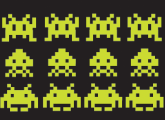Video is undeniably embedded into our daily lives. We consume it constantly through various different channels – TV, online, social channels, advertising boards – everywhere. And video proves itself to have the power to engage on a global level. You only need to think back to last year and the 2.4 million videos that were created on phones and tablets for the Ice Bucket Challenge. Video proves itself time and time again to be the most engaging, and levelling, media we have.
Unsurprisingly, in education, we’re on a journey to understand how video can add value. Many HE institutions fully embrace lesson capture as a means to allow students to review course content, learn independently, and catch up on missed classes. And in secondary education, a subtle change is being made from talking about ‘lesson capture’ towards ‘learning capture’. The difference is subtle but important.
Technology means that we can now cost effectively capture all that is happening in a classroom, and beyond – after all not all learning takes place in a classroom. But why capture learning? How can teaching be enhanced through learning capture?
Body of evidence
Let’s take a step back, and consider the variety of challenges that schools are facing today. Teaching and learning clearly come top of any teacher’s list of priorities and many educators are grappling with how to embrace and embed technology and digital learning into their teaching to benefit the students. Safeguarding young people both on and offline is also an important consideration, especially for non-digital natives. And naturally, OFSTED inspections weigh heavily on the minds of teachers and schools too. A school that embraces the concept of capturing the learning that takes place in their school is well placed to address some of the challenges above.
Essentially it boils down to providing content for capturing learning for future reference and consideration for both the teacher and the learner.
But why do we need ‘evidence’ of classroom activity? Doubters of the value of learning capture will no doubt jump on that word ‘evidence’ and lean into its negative association. Will the footage be used for berating in staff reviews? Will parents want to see proof of their child’s poor behaviour in the classroom? In some situations, the answer is quite possibly yes. However, in most schools with a positive learning environment this is not the case. Evidence of what took place in a lesson is there for a teacher to self-critique and understand why certain activities worked out well but others didn’t. The footage is available for when there is a disagreement about a student’s behaviour – visually showing a parent footage of a student is far more constructive and factual than words.
About time
The question of when learning should be captured is particularly interesting. Presently, the majority of captured learning is planned and therefore pre-meditated. In truth reality is not being captured, but rather a timed, premeditated performance, and not the normal situation upon which we are trying to improve for teachers and students alike. Of course, pre-planned capturing has its place, for example when evidencing teaching assets such as presentations or demonstrations whereby you would really like to have the best example available. But this serves a different purpose. How much would students benefit if learning could be captured ‘on the fly’?
What teaching needs is a pedagogical mind shift towards an ‘always on’ approach. This is a bold step for any teacher as the thought of capturing all of their learning environment is a scary one. It requires confidence and a transition to a creative mindset that embraces the idea that selfevaluation can be remarkably empowering.
It also needs a trusting relationship with their school, including the understanding that captured learning will not be used to a negative effect.
Constant capture
So does the technology support the drive for ‘always on’ captured learning? Absolutely. A few years ago this may not have been the case – but we are now in a place where networks are generally robust enough, storage is cheap and fast, and security, whilst it is never infallible, is considerably more secure and on the whole much more simple to use.
Why shouldn’t our classrooms always be ‘on’ and captured? Aren’t our future generations, their safe-guarding and capability the most important things to us personally, morally and nationally? If we can’t capture all classrooms all of the time then are we perhaps saying that there is a massive problem here, and that we are under performing? As a teacher, the door to my classroom was always open for scrutiny. We know that to be accountable is perhaps seen as more stressful but it is necessary if we as a nation are going to continue to develop, flourish and ultimately protect and further the lifestyle that we have in this country.
Learning capture – rather than the more restricted, ‘staged’ lesson capture of the past – puts the focus of the process fully on the benefits in terms of growth and development to both teacher and student. Technology is now suitably developed to facilitate an ‘always on’ approach; the future of learning capture now sits squarely in the hands of educators – it is theirs to embrace and see how their teaching and learning can excel as a consequence.up that challenge.
ABOUT THE AUTHOR
Andrew Goff has a broad breadth of experience in technology around teaching, learning and communication. In schools he has taught technology and ICT, acted as a development director, before doing consultancy for various businesses in the education sector, and is now COO at Digital Learning Delivery (www. digitallearningdelivery.com)










